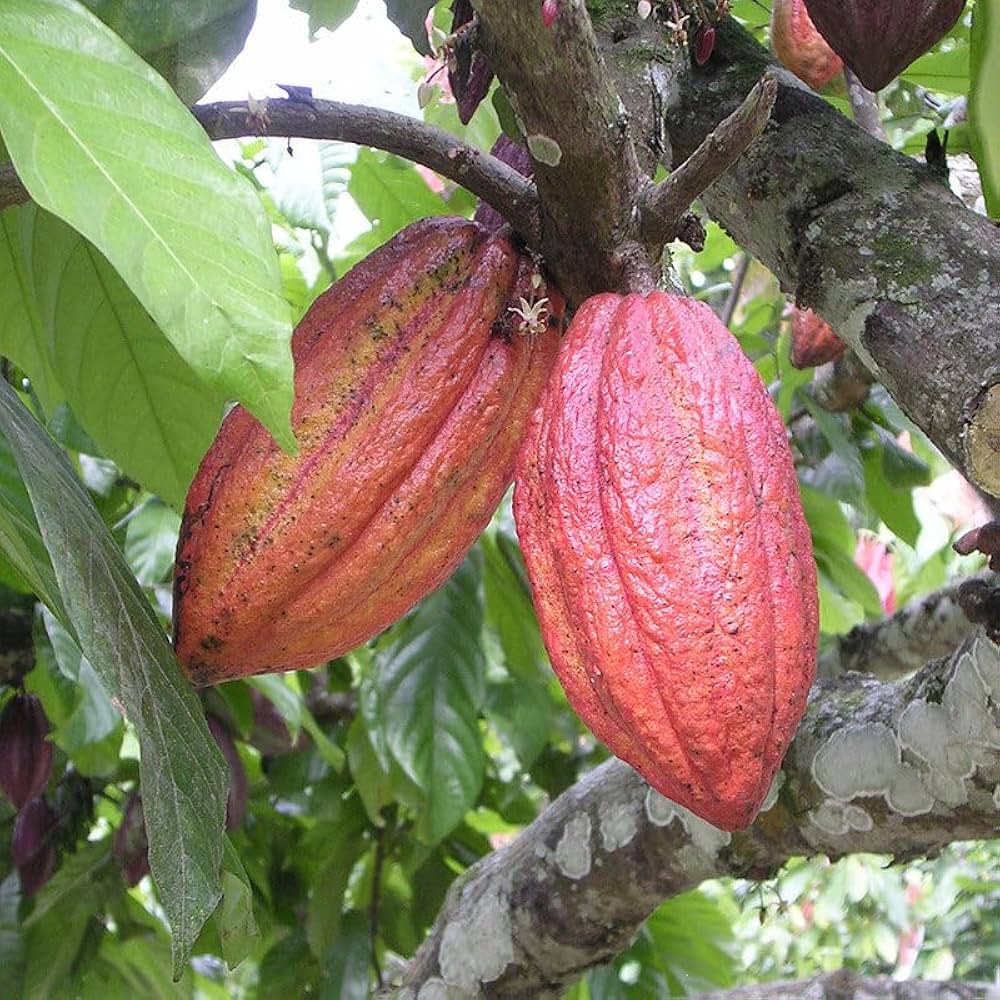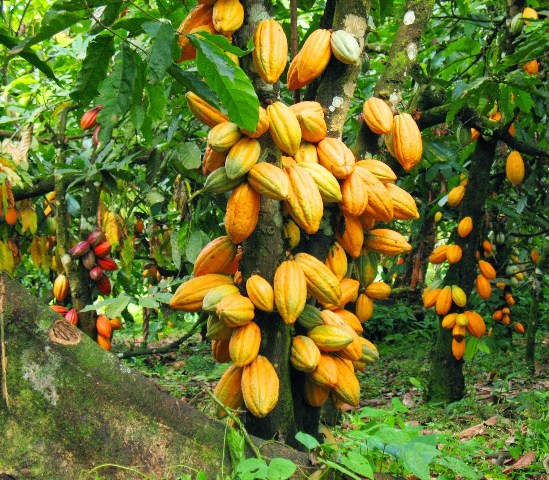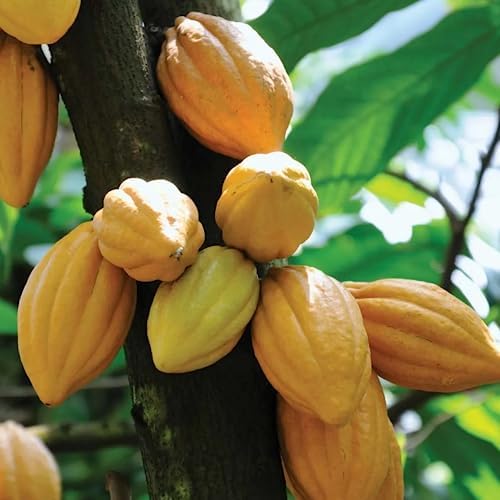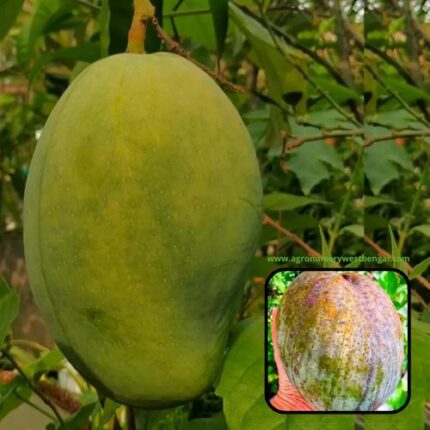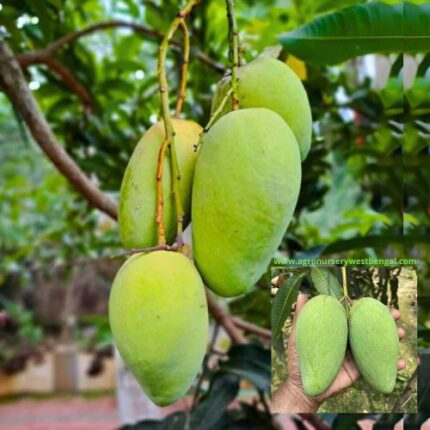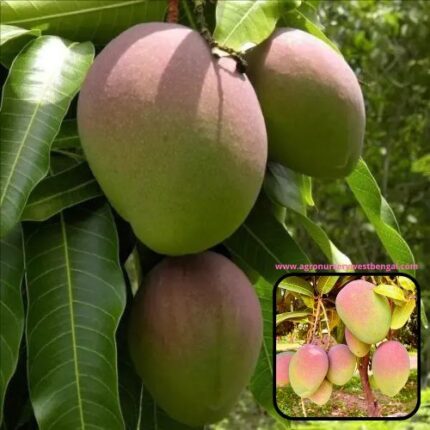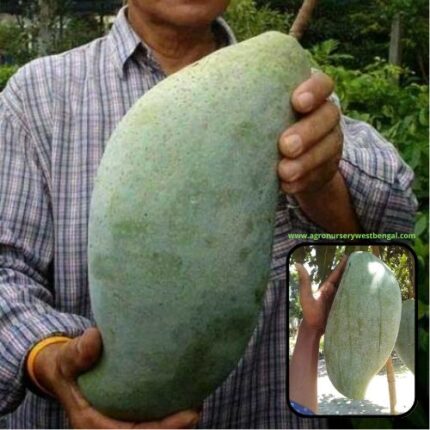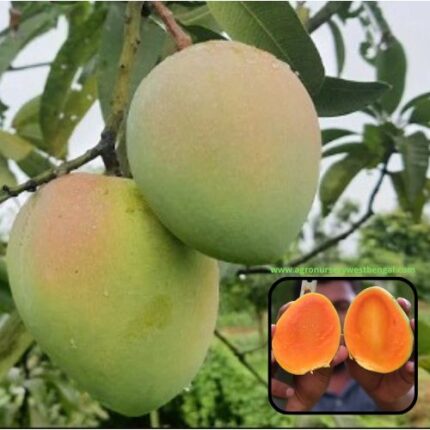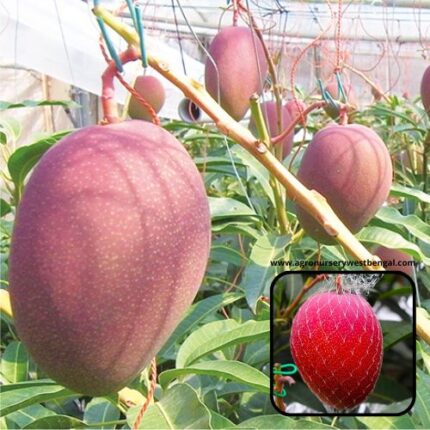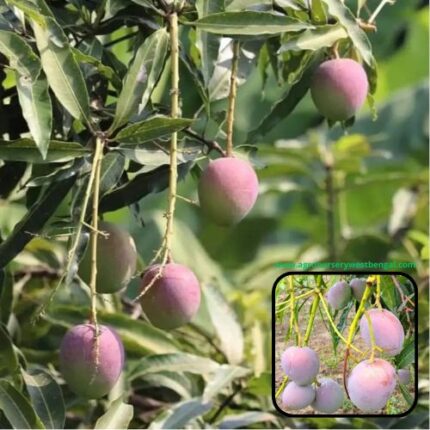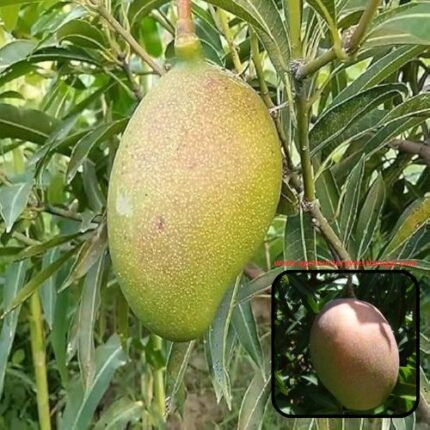
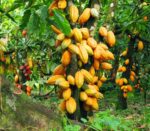
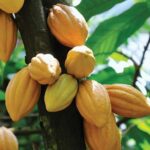
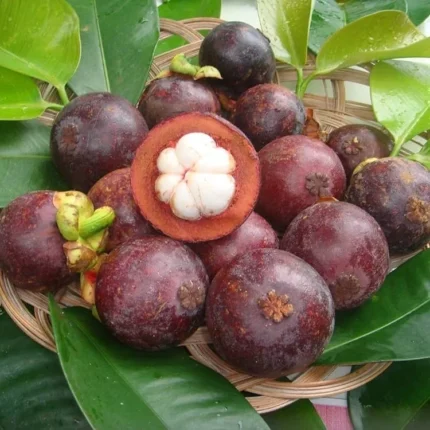
Mangosteen fruit plants
₹2,999 Original price was: ₹2,999.₹1,999Current price is: ₹1,999.
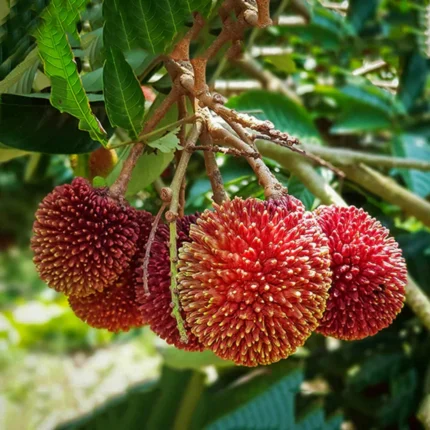
Pulasan fruit plant
₹2,999 Original price was: ₹2,999.₹1,999Current price is: ₹1,999.
Cocoa fruit plant
₹1,399 Original price was: ₹1,399.₹899Current price is: ₹899.
Category: Fruit Plants
Description
The Cocoa fruit, or cacao pod, is the remarkable fruit of the Theobroma cacao tree, whose name fittingly means “food of the gods” in Greek. While most famous for its seeds (cocoa beans) which are the raw material for chocolate, the fruit itself is quite unique and offers a distinct experience.
Here’s a detailed description of the cocoa fruit:
Appearance:
- Shape and Size: Cacao pods are typically ovoid or football-shaped, ranging from 15 to 30 cm (6 to 12 inches) long and 8 to 10 cm (3 to 4 inches) wide. A ripe pod can weigh around 500 grams (1 lb).
- Skin (Exocarp): The outer skin, or exocarp, is thick, leathery, and can be quite rough, with various ridges or warts depending on the variety. It’s often quite hard to cut open.
- Color: Unripe pods can be green, red, or purple. As they mature, their color ripens to shades of yellow, orange, or deep red/purple, often with prominent creases turning yellow or orange. The specific color depends on the cacao variety (Criollo, Forastero, Trinitario).
- Growth Habit: Uniquely, cocoa pods grow directly from the trunk and larger branches of the cacao tree (a phenomenon called cauliflory), rather than from the ends of smaller branches. This makes harvesting by hand easier.
Internal Structure (When Cut Open):
- Pulp (Mucilage): Inside the hard rind, the cocoa beans (seeds) are embedded in a sweet, white, slimy, and mucilaginous pulp. This pulp is sticky and surrounds each bean.
- Cocoa Beans (Seeds): Each pod contains 20 to 60 seeds, commonly referred to as “cocoa beans,” arranged in rows around a central placenta. These beans are typically oval-shaped, about 2.5 cm (1 inch) long. Raw cocoa beans are pale yellow to purplish in color.
Taste and Texture:
- Pulp: This is the most surprising part for those only familiar with chocolate. The white pulp is edible and tastes sweet and tangy, with a complex fruity flavor. It’s often described as a mix of tropical fruits like lychee, mango, pineapple, and citrus, sometimes with a subtle floral note. Its texture is soft and somewhat custardy.
- Raw Beans: The raw cocoa beans themselves, before fermentation and processing, are quite bitter and astringent, not at all like the chocolate we know. They have a very intense, earthy, and sometimes slightly nutty flavor, but without any sweetness.
Tree and Growing Conditions:
- Tree: The Theobroma cacao tree is a small, evergreen tropical tree, usually growing 6-12 meters (20-40 feet) tall. It has large, oblong, glossy green leaves.
- Flowers: Tiny, delicate pink or white flowers bloom directly on the trunk and older branches. While thousands of flowers may appear, only a small percentage (3-10%) will develop into pods.
- Climate: Cacao thrives in hot, humid tropical climates with consistent rainfall and no frost. It prefers partial shade and is often grown under the canopy of taller trees like banana or rubber.
- Origin: Native to the Amazon rainforest and Mesoamerica, where it has been cultivated for over 3,000 years. Today, West Africa is the largest producer.
Uses:
- Pulp: The sweet pulp can be eaten fresh, sucked directly off the beans, or used to make juices, smoothies, jellies, and even alcoholic beverages.
- Cocoa Beans: These are the star. After harvesting, the beans (still covered in pulp) undergo a crucial fermentation process (which develops flavor precursors), followed by drying, roasting, winnowing (removing the husk), and grinding. This processing transforms the bitter raw beans into cocoa liquor, which is then used to make cocoa butter, cocoa powder, and, of course, chocolate.
- Whole Fruit Chocolate: Increasingly, some chocolate makers are utilizing the pulp along with the beans to create “whole fruit chocolate,” which offers a naturally sweeter and fruitier flavor profile.
The cocoa fruit is a fascinating example of how a single fruit can yield such diverse and beloved products, with the juicy pulp offering a surprising taste experience far removed from the rich bitterness of its famous seeds.

